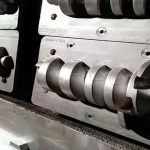The just-concluded 2015 was an extraordinary year for the 3D printing industry. After a wave of 3D printing has started around the world, 3D printing has shown revolutionary breakthroughs in terms of technology and materials, as well as speed and precision, and the industry has exploded the world with an explosive growth trend. Below we will review the direction of the 3D printing industry in 2015 with 10 keywords.
1. Performance
In 2015, 3D printing developed day by day, but the two giants, Stratasys and 3D Systems, the world’s leading 3D printing companies, encountered bottlenecks. According to the company’s second quarter financial report released by 3D Systems, the company’s net profit and revenue for the quarter did not meet market expectations. In the second quarter ended June 30, 3D Systems had a net loss of $13.7 million, which was less than the net profit of $2.1 million in the same period last year. Stratasys’ net loss in the second quarter expanded from US$173,000 in the same period last year to US$22.9 million. Sales of 3D printers and production materials fell by 13% year-on-year! And its third-quarter revenue was US$167.6 million, a significant increase. Lower than expected, but its GAAP (U.S. General Accounting Principles) net loss soared to US$983 million in the quarter!
Objectively speaking, there are many reasons for this embarrassing situation. For example, currency fluctuations and the wait-and-see approach adopted by potential users may not be within the company’s control. This is more related to the current uncertainties in the macroeconomic outlook. With the continuous innovation of new technologies, the 3D printer market is vying for hundreds of thousands of people, and users are slowly digesting new products and industrial investment. Therefore, it is not surprising that the 3D printing industry has entered a period of slow growth. But in the final analysis, the market prospects of 3D printing are promising, and perhaps in 2016, companies will stage a bottoming out.
2. Quality
This year, Makerbot’s fifth-generation products suffered a class action lawsuit due to poor quality. This explosive “scandal” shocked the 3D printing industry. It is reported that before the fifth generation of Makerbot was put into production, no routine performance, reliability, standardization and verification procedures were tested. In short, MakerBot sells inferior products without knowing anything about quality. This behavior that violates moral conscience has aroused strong dissatisfaction among users, and not only caused a huge decrease in Makerbot’s sales, but also the company’s development is in trouble. After layoffs and closing sales outlets, the “quality door” incident continued to ferment, and Makerbot was forced to reorganize.
Academician Lu Binghuan once pointed out that China’s manufacturing has shifted from being strong to being big and quality first. In the complex 3D printing industry competition, if technology is the key, then quality is the foundation. Only with high quality can it become a famous brand, and it can have high value when it becomes a famous brand. It destroys time-honored signboards, and the outbreak of industry “scandals” will also hinder the pace of future development. 3D printing boosts the world’s intelligent manufacturing must first complete “quality” manufacturing.
3. Patent
Intellectual property rights and technology patents are the basic respect for research results. However, since many 3D printing industries have just started, it is inevitable that they will be scratched in terms of patents in terms of products and technologies. This year, there have been frequent infringements in the 3D printing industry, from HP’s “MJF” multi-jet fusion technology infringing on Memjet patents, to the Tyre era’s lawsuit against Weikong Borui, to the first domestic 3D printing infringement case – Zhuhai Xitong Electronics Co., Ltd. sued Tianwei Pegasus 3D printer appearance infringement, this series of “scandals” incidents have triggered heated discussions in the industry on 3D printing patents, and whether to establish or break patent barriers has once become a hot topic in the industry.
Although breaking the patent barriers, “group heating” is conducive to resource sharing and joint development of the 3D printing market. However, if the labor results of technical research and development personnel are not protected by law, then 3D printing original designs will be greatly reduced, and 3D printing technology will not be able to continue to make breakthroughs. As a result, it is not conducive to the development of the 3D printing market in countries all over the world, and it is also not conducive to the long-term development of enterprises.
Link to this article:Interpretation of the top ten keywords for the direction of the 2015D printing industry in 3
Reprint Statement: If there are no special instructions, all articles on this site are original. Please indicate the source for reprinting:Mold Wiki,Thanks!^^

